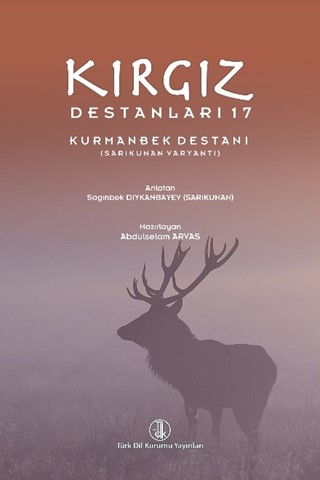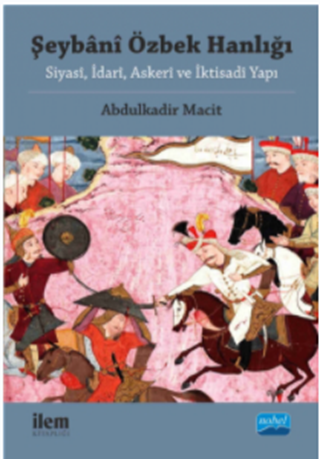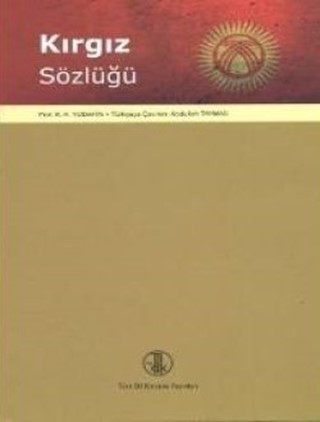
Kırgız Destanları 17: Kurmanbek Destanı (Sarıkunan Varyantı) / Kyrgyz Epics 17: Kurmanbek Epic (Sarıkunan Variant)
Kyrgyz epics constitute an important part of the epic tradition of the Turkic world. The "Kurmanbek Epic", on the other hand, is one of the most variants/versions of the Kyrgyz after "Manas". The fact that the aforementioned epic has many variants/versions completes its shortcomings and makes it an important place in the Turkish world epic tradition. In this study, by introducing the Kyrgyz epics with their main lines, the studies on the "Kurmanbek Epic" were mentioned. In addition, by using the comparative method, the texts of the "Kurmanbek Epic" were compared, and accordingly, it was determined that there were four variants and five versions of the epic. Later in the research, variants and versions were introduced and their summaries were given, and the Sarıkunan variant was transferred to Turkish.

ŞEYBÂNÎ ÖZBEK HANLIĞI: Siyasî, İdarî, Askerî ve İktisadî Yapı / ŞEYBÂNÎ ÖZBEK HANLIĞI: Political, Administrative, Military and Economic Structure
This book, Since the XVI. the century to the present, Uzbeks undertook the dominationof Transoxiana is not the diagnosis nor the solution of today's regional events or problems. He claims that the process of the Şeybânîs of the century should be analyzed properly and for this purpose, the political, military, administrative and economic structure of this century is brought to light.
XVI. Şeybânî Özbek Khanate, one of the new states that came to life on the eastern side of the map of the Islamic world in the first years of the century, XV. A quick conquest by emigrating from Deşt-i Kipchak (Kipchak steppe) under the leadership of Ebu'l-Hayr Han, who was the fifth son of Cuci Şeybân (Şîbân), who took the name of Altınordu Cuci (Coçi) nation's Uzbek nation. It was established by the Uzbeks acting with the policy of Transoxiana, which is the remainder of the Timurid Empire. So much so that the Shaybani ruled in Transoxiana, Harizm, Fergana and its surroundings for about a century. Shaybani khans, on the one hand, struggled with the dynastic throne for the aforementioned century, on the other hand, they were in a constant state of war against the Safavids, Kazakhs and the Baburi. Undoubtedly, this struggle has weakened the Shaybani politically and administratively. Economically, this weakening was accelerated by the loss of the old importance of the land trade routes traveling from the cities of Transoxiana in the east-west direction, and the emergence of ocean trade and the north-south direction cities with the effect of geographical discoveries, and the change of the rivers of the region. Here are all these, At the end of the XVI. century, it brought the Şeybânî Özbek Khanate's withdrawal from the stage of history, despite all its glory.

Kazak Destanları IV / Kazakh Epics IV
"Kazakh Epic 4: Crimea Forty-Batyr" is the 26th of the works under the “Detection of Turkish World Epic, Transferring to Turkey Turkish and Publishing Project" headed by Prof. Dr. Fikret Türkmen. It consists of three parts: "Anışbay Batır and His Generation", "Karadön Batır and His Generation" and "Epics About Certain Heroes". In the first part; Anışbay Batır, Parpariya, Kuttıkıya, Edige, Nuradın, Musahan, Orak, Mamay, Karasay, and Kazi epics are included. In the second part; There are epics of Karadön, Jubanış, Süyüniş, Er Begis, Tegis, Kögis, Tama, Tana, Narik, and Şora. In the third part; There are the epics of Kadırbay Son Kobııldı, Asankaygı, Togan, Abat, Kargaboylu, Kaztuvgan, Köşke Batır, Köşke Son Er Kosay, and Akjonas Son Er Kenes. This narrative called "Forty Batirs of Crimea", which was prepared for publication is the copy that is written by Murun Jırav Sengirbayev. In the work, the transcribed text of epics and the text transferred to Turkish are given mutually. There is also a small dictionary explaining some of the words used in epics at the end of the work.

Mangışlak`taki Türkmen ve Kırgızlar, Richard KARUTS / Turkmen and Kyrgyzs in Mangışlak, Richard KARUTS

Kırgız Sözlüğü I-II / Kyrgyz Dictionary I-II
K. K. Yudahin's work, published in Moscow in 1940 with the name of the Kyrgyz Russian Dictionary, was translated into Turkish by Abdullah TAYMAS and published under the name of Kyrgyz Dictionary. The work includes 25,000 words. K. K. Yudahin created this dictionary by compiling the language materials he obtained from printed Kyrgyz texts such as newspapers, textbooks, folklore, and bedii literature that he studied in order to help him with his work, and the language materials he collected by visiting the Kyrgyz country. In the introduction of the work, Yudahin's notes on the Kyrgyz language and information about using the dictionary are included
